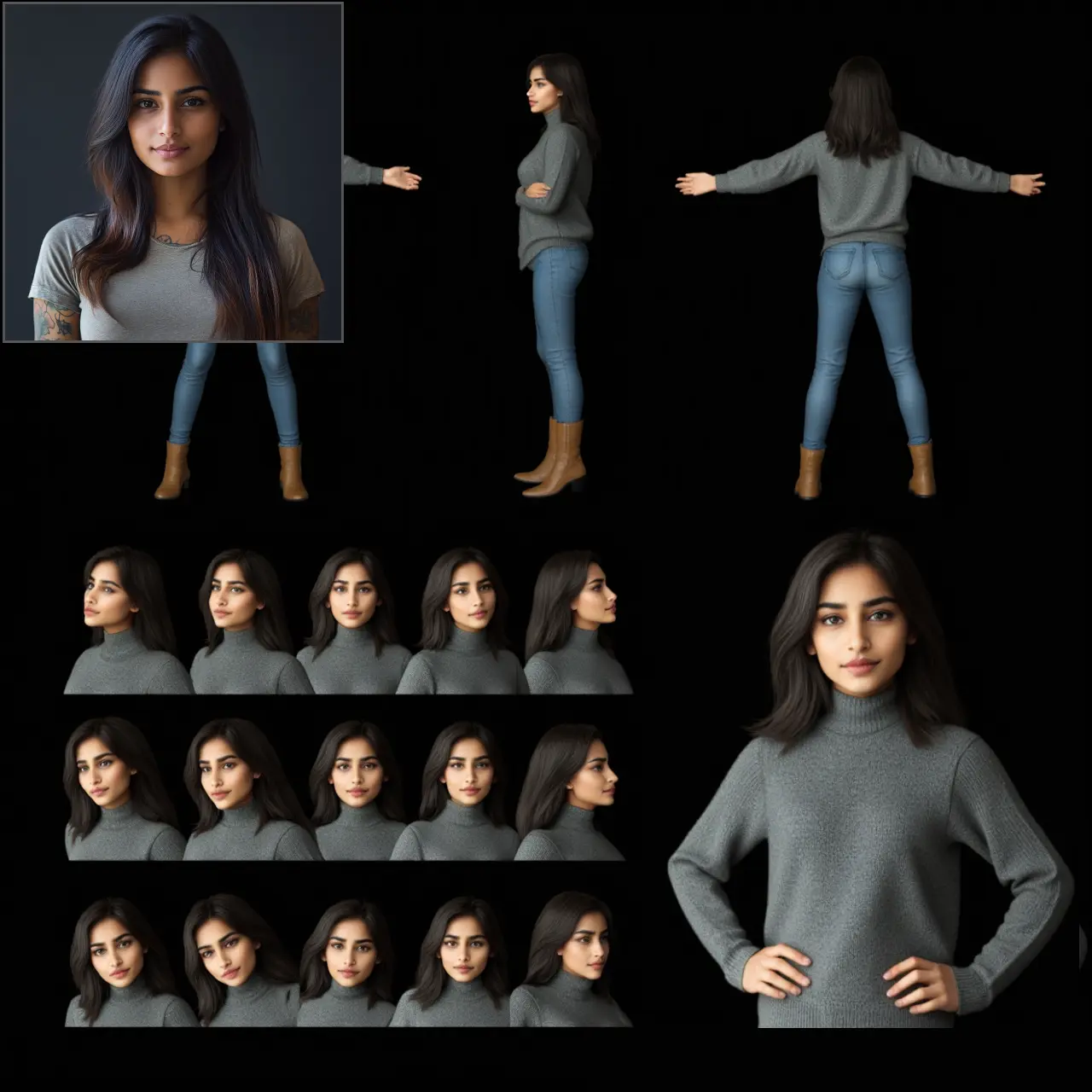ComfyUI Node: Global Restoration with Scratch Processing
Stage1S
Categoryold-photo
Haoming02 (Account age: 1616days) Extension
ComfyUI Old Photo Restoration Latest Updated
2024-11-05 Github Stars
0.04K
How to Install ComfyUI Old Photo Restoration
Install this extension via the ComfyUI Manager by searching for ComfyUI Old Photo Restoration- 1. Click the Manager button in the main menu
- 2. Select Custom Nodes Manager button
- 3. Enter ComfyUI Old Photo Restoration in the search bar
Visit ComfyUI Online for ready-to-use ComfyUI environment
- Free trial available
- 16GB VRAM to 80GB VRAM GPU machines
- 400+ preloaded models/nodes
- Freedom to upload custom models/nodes
- 200+ ready-to-run workflows
- 100% private workspace with up to 200GB storage
- Dedicated Support
Global Restoration with Scratch Processing Description
Specialized node for restoring old photos, focusing on scratch and quality issues with global detection and restoration.
Global Restoration with Scratch Processing:
Stage1S is a specialized node designed for the restoration of old photographs, with a particular focus on processing images that may have scratches or other quality issues. This node is part of a broader workflow aimed at enhancing and restoring images, making it an essential tool for those looking to breathe new life into aged or damaged photos. The primary function of Stage1S is to perform global detection and restoration, utilizing advanced algorithms to identify and correct imperfections in the image. By leveraging GPU capabilities, it ensures efficient processing, even for high-resolution images. The node's ability to handle scratch and quality restoration makes it a valuable asset for artists and photographers who wish to preserve the integrity and aesthetics of historical images.
Global Restoration with Scratch Processing Input Parameters:
image
The image parameter is the primary input for the Stage1S node, representing the photograph that needs restoration. This parameter accepts an image in tensor format, which is a common data structure used in machine learning and image processing. The input image serves as the basis for all subsequent restoration processes, and its quality and resolution can significantly impact the final output. It is crucial to provide a clear and well-defined image to achieve the best restoration results.
hr
The hr parameter is a boolean option that determines whether the image should be processed in high resolution. By default, this parameter is set to False, meaning the node will perform standard resolution processing. When set to True, the node applies additional processing steps to handle high-resolution images, which can enhance the restoration quality but may require more computational resources. This parameter is particularly useful when working with large or detailed images where preserving fine details is essential.
gpu_id
The gpu_id parameter specifies the identifier of the GPU to be used for processing. It is a string parameter with a default value of "0", indicating the first GPU in a multi-GPU setup. This parameter allows users to select a specific GPU for the restoration task, optimizing performance and ensuring efficient use of available hardware resources. Proper configuration of this parameter is important for achieving faster processing times, especially when dealing with high-resolution images or large datasets.
Global Restoration with Scratch Processing Output Parameters:
IMAGE
The output of the Stage1S node is an IMAGE, which is the restored version of the input photograph. This output is provided in tensor format, ready for further processing or display. The restored image reflects the node's ability to detect and correct scratches and other quality issues, resulting in a cleaner and more visually appealing photograph. The effectiveness of the restoration process is largely dependent on the quality of the input image and the configuration of the input parameters.
Global Restoration with Scratch Processing Usage Tips:
- To achieve optimal restoration results, ensure that the input image is of good quality and free from excessive noise or artifacts.
- When working with high-resolution images, consider enabling the
hrparameter to preserve fine details and enhance the overall quality of the restoration. - If you have access to multiple GPUs, use the
gpu_idparameter to distribute the processing load and reduce execution time.
Global Restoration with Scratch Processing Common Errors and Solutions:
Dependency cycle detected
- Explanation: This error occurs when there is a cycle in the node dependencies, preventing the execution from proceeding.
- Solution: Review the node connections in your workflow to ensure there are no circular dependencies. Adjust the connections to create a linear or acyclic graph structure.
Invalid GPU ID
- Explanation: This error indicates that the specified
gpu_iddoes not correspond to an available GPU on the system. - Solution: Verify the GPU IDs on your system and ensure that the
gpu_idparameter is set to a valid identifier. Adjust the parameter to match an available GPU.
Global Restoration with Scratch Processing Related Nodes
RunComfy is the premier ComfyUI platform, offering ComfyUI online environment and services, along with ComfyUI workflows featuring stunning visuals. RunComfy also provides AI Playground, enabling artists to harness the latest AI tools to create incredible art.

